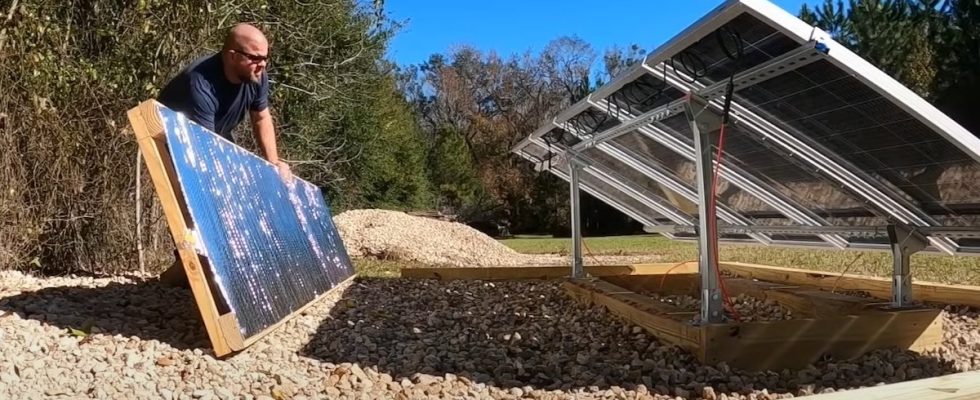March 29, 2024 | Gero Gröschel
Since balcony power plants usually only use a few PV modules, their output is limited. But with a trick you can get more power out of modern modules, as a hobbyist proves.
The advanced technology of bifacial solar panels differs from traditional panels in its ability to absorb light from both sides and convert it into electrical energy. They have solar cells embedded between two layers of transparent material, usually glass. This configuration allows the modules to utilize not only the sunlight hitting their surface directly, but also the light reflected from the bottom.
The technology uses the reflectivity of the earth or other surfaces on which the modules are installed. Light-colored surfaces such as sand, snow or light-colored house walls can significantly increase the effectiveness of these modules by reflecting additional sunlight onto the back of the modules. A YouTuber wanted to know exactly and tested it in his latest video various methods to increase the efficiency of your bifacial solar modules.
Three simple optimizations to imitate
To measure the effect of the individual methods, the YouTuber uses the display of the connected inverter. The first step is to completely shade the back of the solar modules that have been set up in the garden. The value measured in this way (650 watts) serves as a reference for the performance of the modules without light on the back. The following DIY methods are used afterwards:
Light background method
To do this, the farmer gravels the surface of his solar modules with light-colored stones over an area of approximately 4×4 meters. The energy management of his inverter immediately acknowledges this with an increase in power of around 20 watts. Brightening the floor area was able to increase efficiency by around three percent.
Method light house wall
To simulate a brightly painted house wall, the inventor sets up several large cardboard areas behind his system, two meters apart. These reflect sunlight diffusely onto the underside of the modules. A check of the inverter shows a further increase in performance of around 15 watts. Together with the light background, the efficiency could be increased by around 5 percent.
Reflective film method
Encouraged by the first results, the YouTuber takes another step. He screws together a wooden frame about four meters long and 60 cm wide. A reflector film, similar to that used to increase the efficiency of radiators, is stapled onto this. This DIY reflector surface is then placed so that the sunlight that falls behind the system is reflected back onto the back of the bifacial modules. The inverter now shows an input power of an astonishing 773 watts.
EFAHRER says: These three simple and inexpensive methods show how anyone can independently increase the efficiency of their solar modules, provided they have the double-sided version. In the end, the yield was increased from 650 to 773 watts, which corresponds to an increase of 16 percent. Even though some retailers advertise up to 30 percent more profits, in practice this is rather unrealistic. But achieving an increase of 10 to 15 percent with little effort is definitely worth it.

